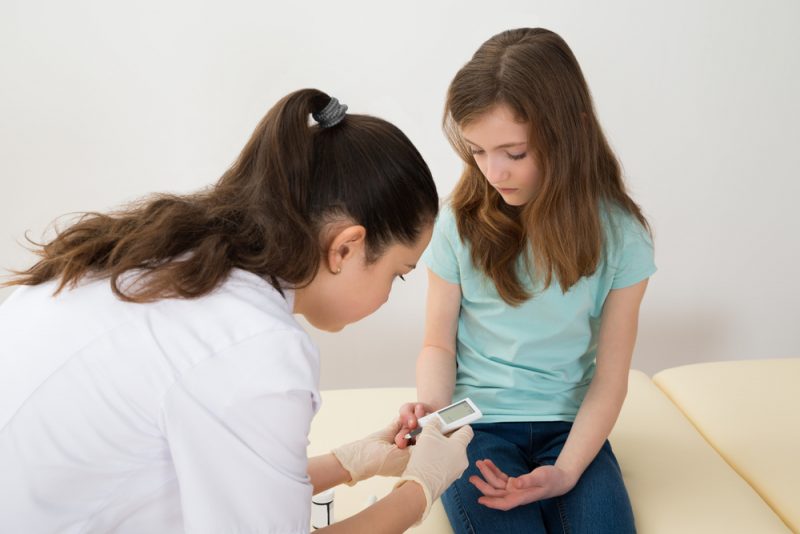
Diabetes can be full of ups and downs – literally. While blood glucose levels can rise, they also can come crashing down. And when they go down too low, your child may experience low blood sugar, or hypoglycemia. If this serious condition is not treated, it can worsen and cause your child to pass out.
Your child may become hypoglycemic if she:
- Skips or delays a meal
- Doesn’t eat enough carbohydrates
- Takes too much insulin or diabetes medicine
- Has been vomiting and/or has had diarrhea
- Is more active than usual
- Had inaccurate blood-glucose readings
It’s important that you’re able to recognize the signs and symptoms of hypoglycemia. These include:
- Shakiness and/or dizziness
- Sweating
- Behavior changes, such as nervousness or irritability
- Extreme hunger
- Weakness or tiredness
- Headache
If your child experiences any of these signs or symptoms, check her blood glucose right away. If you’re unable to check it immediately, treat your child as if she has low blood sugar.
How to treat hypoglycemia
You can reverse your child’s low blood sugar by giving her 15 grams of something high in sugar. This may include:
- 4 ounces (1/2 cup) of regular fruit juice like orange, apple or grape juice
- 4 ounces (1/2 cup) of regular soda pop (not diet)
- 3 or 4 glucose tablets
- 5 to 6 hard candies that are safe (like Life Savers)
After your child consumes a high-sugar item, wait 15 minutes. Then check her blood sugar again. If it’s still low, give her something to eat or drink that’s high in sugar again. Once her blood sugar returns to normal, give her a meal or snack to help keep low blood sugar from returning.
If your child regularly becomes hypoglycemic, consult with your doctor. Specific treatment for your child’s individual case will be based on:
- Your child’s age, overall health and medical history
- Extent of the disorder
- Your child’s tolerance of specific medications, procedures or therapies
- Your preferences as the parent
The goal of treating a child with diabetes is to maintain a safe blood sugar level. To reach this goal, you should test your child’s blood sugar often, learn to recognize oncoming symptoms and treat any problems (like hypoglycemia) quickly – based on your doctor’s instructions.
For additional information about diabetes, visit the Akron Children’s Center for Diabetes and Endocrinology.










